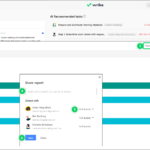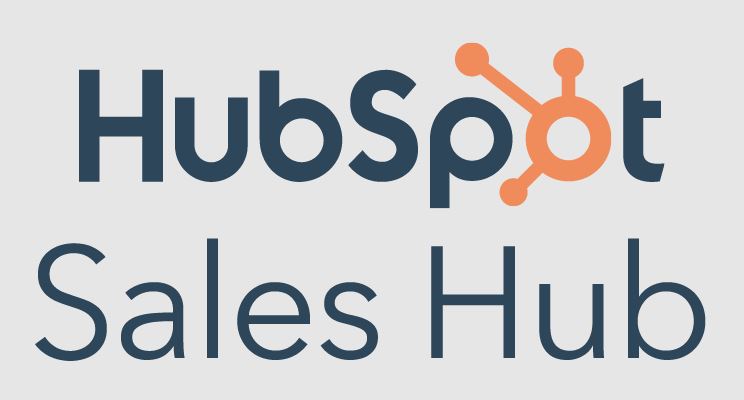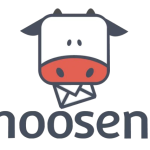OVERALL RATINGS
Best use cases?
- Marketing Agencies
- Human Resources
- Remote Work
- Agile Teams
- Sales Teams
Price
Starting at $9.80 per month
Our Verdict
Wrike provides tailored software solutions for specific industries and team roles, featuring ready-made templates for tasks, workflows, and communication.
Wrike Overview
Wrike, now under the ownership of Citrix, has evolved from its origins as an online platform for project management, team collaboration, and task management. While continuing to excel in these areas, it has expanded its capabilities to include innovative features like work intelligence tools. These tools are designed to proactively identify potential project delays and their causes, enhancing its value as both a collaboration and project management solution.
Though Wrike may come with a slightly higher price tag compared to some of its counterparts, it compensates by being remarkably user-friendly and easy to set up. However, choosing the right project management tool for your team involves considering various factors, including your team’s specific needs and budget constraints. That’s why we invite you to delve into this comprehensive Wrike review to determine if it aligns with your requirements.
Wrike stands out as a robust tool for teams, receiving commendable scores in our evaluations. Yet, its suitability hinges on your individual circumstances. Should you find that Wrike doesn’t quite meet your needs, we’ve identified three Editors’ Choice winners as alternatives: Clickup for those new to project management, Zoho Projects for small and growing teams, and Teamwork for client-centric work.
Is Wrike the Right Choice for Your Business?
The answer to this question largely depends on your specific needs, goals, and the scale of your operations. To help you make an informed decision, let’s consider some common scenarios where Wrike shines and where it may have limitations.
When Wrike Shines:
1. Complex Project Management

If your business deals with complex projects involving multiple team members, interdependent tasks, and tight deadlines, Wrike is an excellent choice. Its versatile task management capabilities, including Gantt charts and dependency tracking, enable you to manage intricate projects with ease.
2. Collaboration-Centric Work
Wrike excels in fostering collaboration among team members. If your projects require constant communication, file sharing, and real-time updates, Wrike provides the necessary tools to keep everyone on the same page.
3. Customized Workflows
Every business has its unique processes. Wrike’s customizable workflows allow you to adapt the tool to your specific project needs. This flexibility ensures that Wrike can align with your organization’s existing practices.
4. Data-Driven Decision-Making

Wrike’s robust reporting and analytics features enable data-driven decision-making. If your business values insights and performance metrics to optimize processes continuously, Wrike offers the tools to do just that.
When Wrike May Have Limitations:
1. Learning Curve
Due to its extensive feature set, Wrike may have a learning curve for new users. While the platform is user-friendly, it’s essential to allocate time for training and onboarding to ensure your team can harness its full potential.
2. Pricing
While Wrike offers a free plan, its more advanced features come with a cost. Small businesses with tight budgets may find the pricing plans less accommodating. It’s crucial to evaluate your budget and the specific features your team needs.
Wrike Ease Of Use (UI & UX)
Wrike offers a user-friendly experience, starting with a no-obligation 14-day free trial of its Business plan, requiring no credit card details. The dashboard boasts a modern, minimalist design with three vertical panes, initially seeming complex but quickly becoming intuitive.

The left pane serves as a navigation bar, granting easy access to projects and teams. In the middle pane, you create tasks and subtasks, akin to file folders in an Explorer window. Clicking a task space reveals details in the right pane, where you can create and customize multiple dashboards for various team needs.
Wrike stands out by combining project and work management. It excels in traditional project planning, offering Gantt charts, task dependencies, and progress tracking. Simultaneously, it efficiently manages ongoing work without fixed deadlines or final deliverables.

Tasks are customizable, with descriptions, deadlines, comments, and attachments, and their statuses (active, completed, deferred, canceled) can be adapted. For non-project work, organize folders within Spaces in various formats (list, table, board, Gantt chart) to suit your preferences.
Wrike’s versatile, user-centric interface simplifies both project and work management, facilitating productivity and collaboration. Explore it during the free trial to optimize your workflow.
Wrike Pros and Cons
- Advanced Collaboration: Wrike's real-time collaboration features like @mentions, file sharing, and discussion threads keep your team on the same page.
- Customizable Workflows: You can tailor Wrike to your unique project processes, ensuring a perfect fit for your business.
- Reporting and Analytics: Wrike's reporting capabilities provide valuable insights to improve project performance.
- Budgeting and Invoicing : Wrike's limitation lies in its budgeting and invoicing capabilities, which are not as robust as some other project management tools.
- Pricing: While Wrike offers a free plan, the more advanced features come with a cost, which may not be feasible for small businesses with tight budgets.
- Complex Projects: For highly complex projects, some users might find certain features lacking, necessitating additional integrations.
Wrike Tiered Plans and Pricing

Wrike’s pricing structure is generally reasonable given its extensive feature set. However, one drawback we identified is its dependence on a per-user pricing model. This contrasts with other project management applications that offer fixed monthly rates based on the chosen feature tier. Fortunately, Wrike does provide a free version suitable for small teams, and its Professional tier offers a cost-effective option considering the array of features it includes.
| Free | Professional | Business | Marketers | Enterprise |
| Five users | $9.80/month/user | $24.80/month/user | Negotiate price | Negotiate price |
Wrike Core Feature Ratings
Resource Management
Wrike Resource is an add-on resource management tool that enables teams to keep track of their resources, including team members’ workloads and timesheets. It helps in optimizing resource allocation and ensures efficient project planning and execution.
Document Storage
Wrike’s task management system includes document storage capabilities, allowing users to upload and store various types of files, such as photos, papers, PDFs, and spreadsheets. This feature helps teams centralize their project-related documents for easy access and collaboration.
Time Tracking
Wrike Resource also provides time tracking and timesheet management functionalities. This feature allows teams to monitor the time spent on tasks and projects accurately, helping in project cost estimation and resource optimization.
Prepared Templates
Wrike offers a variety of pre-made templates for different types of projects, such as marketing campaigns and product development. These templates serve as a starting point for new projects, saving time on initial setup and ensuring consistency in project workflows.
Advanced Account Permissions
Wrike allows for granular permission settings, enabling administrators to control access to projects and folders. This feature ensures that only the right users have access to specific project resources, enhancing data security.
Communication
Wrike offers communication features through a comment box for every task and the ability to @ mention team members. Additionally, there’s a Stream feature that displays all project activities. While it lacks built-in text chat or video call tools, it provides a central place for project-related communication and updates.
Security
Wrike prioritizes security, with enterprise-grade security measures included in all plans. The Business plan offers folder and project permissions for added security, while the Enterprise and Pinnacle plans come with advanced security features like two-factor authentication and compliance with various security certifications.
OVERALL RATINGS
Additional Wrike Features (Add-Ons for Premium Plans)
- AI Project Risk Prediction: This feature utilizes artificial intelligence to identify and alert users when a project is at risk of missing its deadlines, helping teams proactively address potential issues and improve project management.
Wrike Marketing Insights: This add-on is designed for digital marketers, allowing them to integrate marketing and ad campaign data into Wrike. It provides easy access to performance metrics for campaign assets.
Wrike Integrate: Wrike’s integration and automation platform enable users to integrate both cloud and on-premises tools, streamlining workflow processes and data exchange.
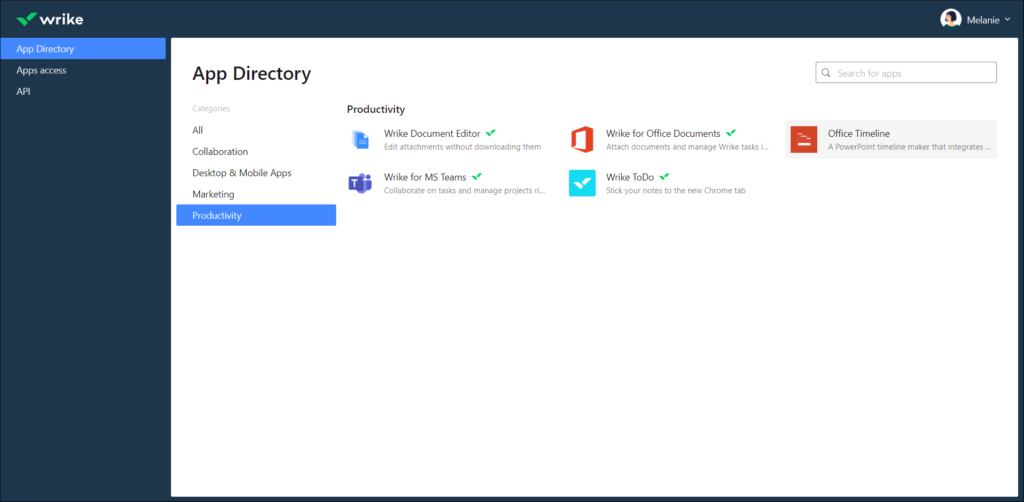
- Wrike Lock: Wrike Lock offers an additional layer of encryption for workspace data and attachments, enhancing data security.
Wrike Two-Way Sync (Jira and GitHub): This feature facilitates seamless communication and data synchronization between Wrike, Jira, and GitHub, improving collaboration between project managers and developers.
Wrike Customer Support Service
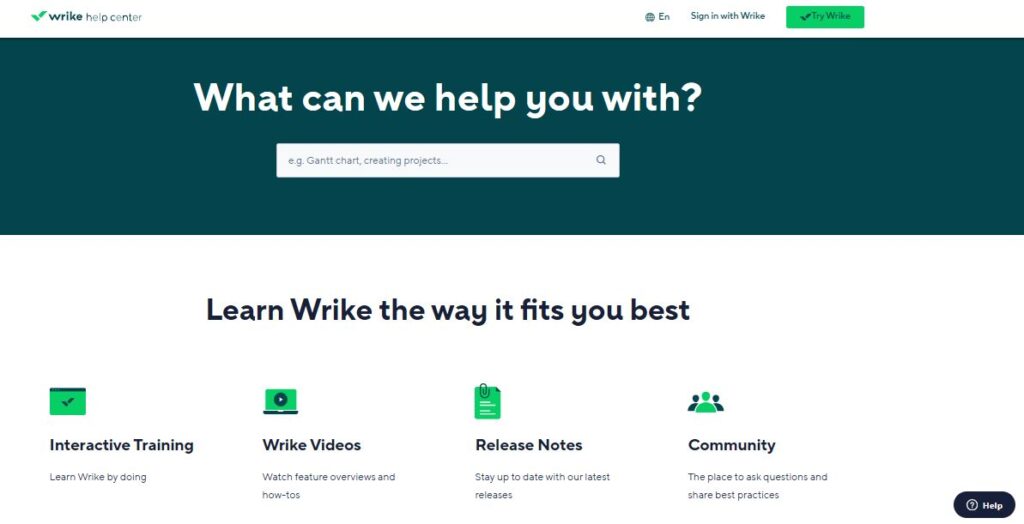
Wrike offers exceptional customer support, featuring a robust knowledge database with training resources and a thriving community forum.
They keep users informed with release notes. Besides standard email and chat support, paid support packages cater to various needs. The Wrike Bot, though not flawless, collects user details for assistance.
New users benefit from free downloadable resources and connecting with the sales team through the bot. Wrike’s standout feature is its exceptional support team, ready to guide and empower users at every step.
With flexibility, resources, and a dedicated support team, Wrike ensures a stellar user experience. Highly recommended for project management and support.
My Verdict on Wrike: Do I Recommend It?
Wrike emerges as a powerful collaboration and project management solution, well-suited for teams valuing seamless teamwork and project oversight. Its extensive feature set accommodates projects of varying complexity and team sizes. However, the abundance of options can make choosing the right plan challenging, necessitating contact with their sales team for guidance.
While Wrike’s capabilities are impressive, its pricing may pose a concern for budget-conscious users. Nonetheless, for larger teams tackling numerous projects, Wrike excels with integrations, versatile task management, robust security, and an array of templates for streamlined productivity.
It’s an intuitive choice for efficient work tracking and collaboration, though alternative options like Basecamp, Backlog, Teamwork, and Scoro may better suit specific needs and budgets.
Unlock seamless collaboration and productivity with Wrike – Get Started with the free plan now.
Wrike Alternatives
Wrike Frequently Asked Questions (FAQs)
What makes Wrike standout from other Project Management tools?
Wrike stands out with its seamless blend of collaboration and project management features. Its ability to accommodate projects of various sizes and complexities, along with its extensive integrations and security measures, sets it apart. The platform offers a flexible and intuitive hub for teams to collaborate and manage their work effectively, making it unique among project management tools.
Who is Wrike best suited for?
Wrike is ideal for a broad range of users. It caters to teams and organizations of all sizes that prioritize efficient collaboration and project management. Whether you’re a small team looking for streamlined task management or a large enterprise managing complex projects, Wrike can be tailored to your needs. Its versatility makes it a valuable asset for businesses across various industries.
Is Wrike user-friendly?
Wrike is known for its user-friendly interface and ease of use. Many teams can quickly adapt to the platform without extensive training, thanks to its intuitive design. Wrike’s straightforward navigation, comprehensive knowledge base, and customer support make it accessible for both beginners and experienced project managers.






